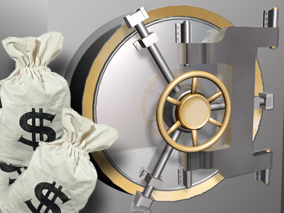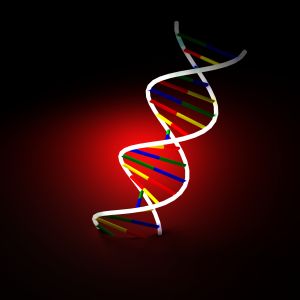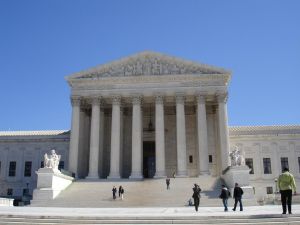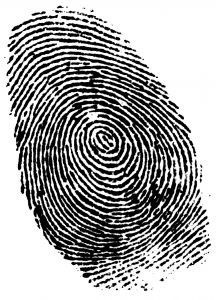 One of the busiest and most densely populated areas in Baltimore County is quickly becoming one of the most dangerous as well. Towson is the county seat or capital of Maryland’s third largest county, and is home to over 55,000 residents. The population is on the steady incline, and new residential development projects promise to bring a dramatic population increase over the next decade. Towson is typically regarded as a low crime area, and although the thousands of college students studying at Towson University and Goucher College can cause a little trouble from time to time, most of the crime in the area is limited to minor drug and alcohol offenses. But recent figures released by the Baltimore County Police suggest that violent crime may be rearing its ugly head in the area.
One of the busiest and most densely populated areas in Baltimore County is quickly becoming one of the most dangerous as well. Towson is the county seat or capital of Maryland’s third largest county, and is home to over 55,000 residents. The population is on the steady incline, and new residential development projects promise to bring a dramatic population increase over the next decade. Towson is typically regarded as a low crime area, and although the thousands of college students studying at Towson University and Goucher College can cause a little trouble from time to time, most of the crime in the area is limited to minor drug and alcohol offenses. But recent figures released by the Baltimore County Police suggest that violent crime may be rearing its ugly head in the area.
Continue reading →
Articles Posted in Robbery and Burglary
Bank Robberies On The Rise In Maryland
 Bank robbery one of the oldest and most glamorized crimes in America. It’s the storyline behind countless novels, Hollywood dramas, and folklore heroes such as Billy the Kid, and Bonnie and Clyde. But now bank robbery is quickly becoming one of the more common violent crimes in Maryland, and those who have noticed more of these stories appearing in the local news are on to something. According to the FBI there were 86 total bank robberies statewide in 2012, and as of last month there were already 98 in 2013. The majority of these heists are actually successful, but law enforcement eventually catches up to the offenders, especially those who hit the same bank multiple times. And if you think it’s rare for a seasoned thief to rob the same bank over and over, think again. It has been a widely used strategy by many thieves to choose a vulnerable establishment and strike multiple times. These vulnerable banks are typically in more rural areas, where crime rates are low and so is the security. In addition, the culprits are often residents of the areas where these banks are located, and if they aren’t residents they are highly familiar with the surroundings. For an example see the case of the former Anne Arundel County schoolteacher who was arrested last month for three Glen Burnie robberies, two of which were at the same bank.
Bank robbery one of the oldest and most glamorized crimes in America. It’s the storyline behind countless novels, Hollywood dramas, and folklore heroes such as Billy the Kid, and Bonnie and Clyde. But now bank robbery is quickly becoming one of the more common violent crimes in Maryland, and those who have noticed more of these stories appearing in the local news are on to something. According to the FBI there were 86 total bank robberies statewide in 2012, and as of last month there were already 98 in 2013. The majority of these heists are actually successful, but law enforcement eventually catches up to the offenders, especially those who hit the same bank multiple times. And if you think it’s rare for a seasoned thief to rob the same bank over and over, think again. It has been a widely used strategy by many thieves to choose a vulnerable establishment and strike multiple times. These vulnerable banks are typically in more rural areas, where crime rates are low and so is the security. In addition, the culprits are often residents of the areas where these banks are located, and if they aren’t residents they are highly familiar with the surroundings. For an example see the case of the former Anne Arundel County schoolteacher who was arrested last month for three Glen Burnie robberies, two of which were at the same bank.
Continue reading →
Police Arrest Two Suspects In Snowball Stand Break-In
Howard County Police have arrested two suspects in a pair of recent burglary at a local snowball stand. The two young men were charged for two incidents occurring during the last week of July. One on the 26th, and the other just four days later when the frozen treat shack was ransacked again. Police were assisted in the investigation by surveillance from the snowball stand and also a convenience store in close proximity to a hardware store where the stand is located. The footage showed that on 30th two males used bolt cutters to cut open a padlock on the front window of the stand and kicked in the door to gain access. While inside the two burglars tore the place apart looking for anything of value, and came away with cash from two of the registers. The exterior spotlight on the property was also missing. Footage from the convenience store on July 26th showed what police later identified as the same two suspects prying open a door to the shop at around midnight. On this night the burglars attempted to steal a safe but were unsuccessful, which no doubt motivated the duo to return.
Continue reading →
Supreme Court Reverses Maryland Court of Appeals on DNA Law
 More than a year ago the Maryland Court of Appeals threw out Alonzo King’s rape conviction after ruling that police had illegally seized his DNA sample. Mr. King was arrested on an unrelated assault charge in 2009 and his DNA was collected under authority of a state law, which allowed cops to collect such samples from anyone arrested for a serious offense. This sample was fed into an FBI cold case database several months later and it matched an unidentified sample taken from the scene of a 2003 rape. Arrest and prosecution followed soon thereafter, and Mr. King suffered the same fate that most defendants do when trying to fight a case with inclulpatory DNA evidence, as he was found guilty and later sentenced to life in prison. Shortly after the Court of Appeals vacated King’s guilty plea the United States Supreme Court agreed to hear the case on a writ of certiorari. During the past year Mr. King, and to a lesser extent state law enforcement officers, Governor O’Malley, Attorney General Gansler, and anyone with direct or indirect concerns about our civil liberties have been on edge waiting to hear from the Court, and as of this week the wait is over.
More than a year ago the Maryland Court of Appeals threw out Alonzo King’s rape conviction after ruling that police had illegally seized his DNA sample. Mr. King was arrested on an unrelated assault charge in 2009 and his DNA was collected under authority of a state law, which allowed cops to collect such samples from anyone arrested for a serious offense. This sample was fed into an FBI cold case database several months later and it matched an unidentified sample taken from the scene of a 2003 rape. Arrest and prosecution followed soon thereafter, and Mr. King suffered the same fate that most defendants do when trying to fight a case with inclulpatory DNA evidence, as he was found guilty and later sentenced to life in prison. Shortly after the Court of Appeals vacated King’s guilty plea the United States Supreme Court agreed to hear the case on a writ of certiorari. During the past year Mr. King, and to a lesser extent state law enforcement officers, Governor O’Malley, Attorney General Gansler, and anyone with direct or indirect concerns about our civil liberties have been on edge waiting to hear from the Court, and as of this week the wait is over.
In a five to four decision the Supreme Court ruled that the Maryland DNA statute does not violate our Fourth Amendment rights, and law enforcement officials are free to sample the DNA of anyone arrested for a serious crime. The majority opined that an arrestee’s expectation of privacy is not offended by the minor intrusion of a brief swab of his cheeks, and by contrast the government has a significant interest in identifying the arrestee. The government, according to majority, must be able to accurately identify the arrestee so that the proper name can be attached to his charges, and also so the criminal justice system can make a fully informed decision about the arrestee’s pretrial custody status, i.e. the amount of his bail. The majority then compared DNA sampling to photographing, and the universally accepted, although never by Supreme Court opinion, practice of fingerprinting. The four dissenting Justices deferred to Justice Scalia to pen the dissent, which explained and discarded the majority’s 28-page opinion in 18 pages so brilliant that it was actually easy reading. Needless to say if you don’t have time to read both, start your reading after the words “it is so ordered”.
Continue reading →
Thieves Drive Truck Through Store Window In Failed ATM Theft
 The Blog has chronicled some interesting criminal behavior in the past year. To date, the most notable goes to the man charged with selling marijuana from his ice cream truck. While the frozen treat salesman turned drug dealer still holds the dubious honor of most unorthodox criminal, a recent attempted theft in Frederick does put up a challenge. Police reported that multiple unidentified thieves drove a stolen truck into a supermarket in order to carry out their plan to steal an ATM machine. The truck was stolen about an hour before the crime was committed, and police are investigating how and where it was taken. By driving a truck into the store, we do not mean through some sort of large gate or opening. The stolen truck actually was driven through windows and brick wall lining the front of the store. And while the perpetrators were able to gain access to the interior of the supermarket, they were not able to carry out the second part of their brilliant plan to steal the cash machine. After the thieves failed to get the ATM into the flatbed of the hot Ford F550, they fled the scene and left the large truck inside the store.
The Blog has chronicled some interesting criminal behavior in the past year. To date, the most notable goes to the man charged with selling marijuana from his ice cream truck. While the frozen treat salesman turned drug dealer still holds the dubious honor of most unorthodox criminal, a recent attempted theft in Frederick does put up a challenge. Police reported that multiple unidentified thieves drove a stolen truck into a supermarket in order to carry out their plan to steal an ATM machine. The truck was stolen about an hour before the crime was committed, and police are investigating how and where it was taken. By driving a truck into the store, we do not mean through some sort of large gate or opening. The stolen truck actually was driven through windows and brick wall lining the front of the store. And while the perpetrators were able to gain access to the interior of the supermarket, they were not able to carry out the second part of their brilliant plan to steal the cash machine. After the thieves failed to get the ATM into the flatbed of the hot Ford F550, they fled the scene and left the large truck inside the store.
Continue reading →
Supreme Court Hears Argument On Maryland DNA Case
 A few months back, the blog posted an article on a controversial Maryland law that allows police to sample and store DNA from any individual arrested for a violent crime or for burglary. Despite this law still being up on appeal, for the past few months state law enforcement agencies have continued to engage in this practice under the authority of a signed order from Chief Justice Roberts. The order did not overturn a decision by the state court of appeals, which declared the DNA law unconstitutional, but rather allowed DNA sampling to continue pending a final opinion by the country’s highest court. A decision on this controversial law is now expected in the coming months, as the Supreme Court recently heard arguments on the constitutionality police DNA sampling. The arguments were spirited to say the least, and at this early juncture there is no indication which way the majority appears to be leaning. But all justices are aware that this is could be a seminal opinion that could shape criminal procedure for the coming years. Justice Alito described it as the most important criminal procedure case in decades. He added that many murders and rapes could be solved using this technology, which involves a minimal intrusion on personal privacy, and asked why DNA sampling is not the fingerprinting of the 21st century. Whether these statements have tipped Alito’s hand remains to be seen, but there were is certainly some skepticism from the other justices about the law’s constitutionality.
A few months back, the blog posted an article on a controversial Maryland law that allows police to sample and store DNA from any individual arrested for a violent crime or for burglary. Despite this law still being up on appeal, for the past few months state law enforcement agencies have continued to engage in this practice under the authority of a signed order from Chief Justice Roberts. The order did not overturn a decision by the state court of appeals, which declared the DNA law unconstitutional, but rather allowed DNA sampling to continue pending a final opinion by the country’s highest court. A decision on this controversial law is now expected in the coming months, as the Supreme Court recently heard arguments on the constitutionality police DNA sampling. The arguments were spirited to say the least, and at this early juncture there is no indication which way the majority appears to be leaning. But all justices are aware that this is could be a seminal opinion that could shape criminal procedure for the coming years. Justice Alito described it as the most important criminal procedure case in decades. He added that many murders and rapes could be solved using this technology, which involves a minimal intrusion on personal privacy, and asked why DNA sampling is not the fingerprinting of the 21st century. Whether these statements have tipped Alito’s hand remains to be seen, but there were is certainly some skepticism from the other justices about the law’s constitutionality.
Continue reading →
Reported Crime On The Decline In Maryland
 Each year during the summer, the Maryland State Police releases its uniform crime report for the state of Maryland. The crime report uses data collected from every police jurisdiction in all 24 Maryland counties, but only factors in reported crimes in the report. The Maryland State Police defines reported crimes as actual incidents reported to police by victims, witnesses, and other sources used by law enforcement. Complaints of crime that law enforcement deem unfounded are not included in the reported crimes data. The annual uniform crime report is by no means a complete study of all crime in Maryland. In fact, the report only includes eight umbrella crimes in two separate categories, which are violent crimes and property crimes. A specific crime that does not fit into one of the umbrella crimes is not included in the report. Thus many of the most common crimes in Maryland such as DUI, drug possession, and drug sale are not included. In sum, the annual report is not a study of how many people are breaking the law in Maryland each year. Rather, the report analyzes the crimes that that have the greatest impact on citizens, and gauges how safe we really are throughout Maryland.
Each year during the summer, the Maryland State Police releases its uniform crime report for the state of Maryland. The crime report uses data collected from every police jurisdiction in all 24 Maryland counties, but only factors in reported crimes in the report. The Maryland State Police defines reported crimes as actual incidents reported to police by victims, witnesses, and other sources used by law enforcement. Complaints of crime that law enforcement deem unfounded are not included in the reported crimes data. The annual uniform crime report is by no means a complete study of all crime in Maryland. In fact, the report only includes eight umbrella crimes in two separate categories, which are violent crimes and property crimes. A specific crime that does not fit into one of the umbrella crimes is not included in the report. Thus many of the most common crimes in Maryland such as DUI, drug possession, and drug sale are not included. In sum, the annual report is not a study of how many people are breaking the law in Maryland each year. Rather, the report analyzes the crimes that that have the greatest impact on citizens, and gauges how safe we really are throughout Maryland.
The 2011 Maryland uniform crime report was released back in June, and according to the data, reported crimes decreased by almost 5 percent from 2010 to 2011. In 2010, there were 204,916 total crime incidents reported, and this number dropped to 195,517 incidents of crime in 2011. Reported incidents of violent crime in Maryland, which includes murder, rape, robbery, and aggravated assault decreased by almost 9 percent. Reported property crimes, which include breaking or entering, larceny-theft, motor vehicle theft, and arson decreased by a much lower rate, but still trended downward. Last year, for every 100,000 people in Maryland, there were roughly 3,350 crime victims, and 495 violent crime victims.
Continue reading →
Maryland Police Can Resume DNA Sampling In Violent Crime Arrests
 The United States Supreme Court will temporarily allow Maryland law enforcement agencies to resume their post arrest DNA testing policies according to an order signed by chief justice John Roberts. The DNA testing policies allow all Maryland law enforcement agencies to take DNA samples of suspects arrested for violent crimes such as robbery, assault, rape, and homicide. The law also allows police to take DNA from a suspect that is arrested for burglary. Although burglary is not a violent crime, it is a crime that is often only solved when forensic evidence such as DNA or latent fingerprints is recovered from the crime scene. Maryland police agencies are not allowed to take DNA samples upon arrest of suspects that are incarcerated for common non-violent crimes such as DUI, possession of marijuana, and drug distribution.
The United States Supreme Court will temporarily allow Maryland law enforcement agencies to resume their post arrest DNA testing policies according to an order signed by chief justice John Roberts. The DNA testing policies allow all Maryland law enforcement agencies to take DNA samples of suspects arrested for violent crimes such as robbery, assault, rape, and homicide. The law also allows police to take DNA from a suspect that is arrested for burglary. Although burglary is not a violent crime, it is a crime that is often only solved when forensic evidence such as DNA or latent fingerprints is recovered from the crime scene. Maryland police agencies are not allowed to take DNA samples upon arrest of suspects that are incarcerated for common non-violent crimes such as DUI, possession of marijuana, and drug distribution.
Earlier this year, the Maryland DNA sampling law was challenged in the Maryland Court of Appeals, and the Court ruled that the DNA collection policy was unconstitutional under the 4th Amendment of the United States Constitution. The 4th Amendment protects citizens against unlawful government search and seizures, and it has been argued by the ACLU and the Public Defender’s Office that taking DNA samples upon arrest is an unlawful seizure. Most states only take DNA samples from defendants after a criminal conviction, or after a judge issues a warrant specifically allowing DNA collection. The ACLU also argued that Maryland’s DNA collection policy violates each citizen’s right to privacy. The Maryland high court agreed with the ACLU back in April, and reversed a 2009 rape conviction. The rape defendant was arrested on an unrelated assault charge, and pursuant to the Maryland DNA testing policy; his DNA was sampled and entered into a database. The database matched the DNA taken from the assault arrest with DNA that was recovered at the scene of an unsolved Maryland rape case, and thus an arrest warrant was issued for the rape defendant.
Continue reading →
Maryland Robbery Victim Reports Stolen Marijuana To Police
 A Maryland man was recently the victim of an armed robbery in his home in College Park. Amongst the property the man reported stolen to the police was about $600 of rent money and the man’s stash of marijuana. Yes, you heard that correctly. The College Park man reported to police that the robbery suspects were armed with handguns and had demanded that the man turn over his money and his drugs. The robbery suspects reportedly assured the man that he would not be in any danger if he complied with the request to give up his money and his marijuana. A nice gesture by the armed home invasion robbers, but a gesture that will certainly not help the suspects in court if they are ever arrested. The Maryland man complied and handed over his rent money and an unknown quantity of marijuana, and then the robbery suspects left the house. Police also reported that the armed robbery suspects took laptops and cell phones from the house, but the Maryland man was not aware of this missing property at the time he initially reported the crime to police.
A Maryland man was recently the victim of an armed robbery in his home in College Park. Amongst the property the man reported stolen to the police was about $600 of rent money and the man’s stash of marijuana. Yes, you heard that correctly. The College Park man reported to police that the robbery suspects were armed with handguns and had demanded that the man turn over his money and his drugs. The robbery suspects reportedly assured the man that he would not be in any danger if he complied with the request to give up his money and his marijuana. A nice gesture by the armed home invasion robbers, but a gesture that will certainly not help the suspects in court if they are ever arrested. The Maryland man complied and handed over his rent money and an unknown quantity of marijuana, and then the robbery suspects left the house. Police also reported that the armed robbery suspects took laptops and cell phones from the house, but the Maryland man was not aware of this missing property at the time he initially reported the crime to police.
As unbelievable as it may seem, theft, burglary, and robbery victims often report to police that their drugs have been stolen. Drugs such as marijuana and cocaine are certainly properties hat have value to the owners, and the owners of these drugs feel wronged if they are stolen. On the other hand, calling the police to report stolen drugs will never benefit the owner of the drugs in his or her quest to get the drugs back. If police do happen to locate the stolen property, they will simply confiscate the drugs and place them in an evidence locker or destroy them. At least this is what police are supposed to do with the drugs they confiscate, but criminal lawyers tend to hear numerous stories about police keeping the drugs for themselves or even selling them back to the original owners. Reporting stolen illegal drugs such as marijuana, cocaine, and pills also creates numerous other legal questions, such as whether someone who reports stolen illegal drugs can be arrested for possession of drugs, or whether someone who steals illegal drugs can be arrested for theft of drugs.
Continue reading →
Baltimore County Burglary Suspect Identified
 Baltimore County Police have identified the main suspect in a string of recent Baltimore area burglaries. The burglaries have resulted in the theft of valuable items such as electronic office equipment, black checks, food, office supplies, postage stamps and money. The main suspect is apparently a 48 year old man from Baltimore that has also been implicated in other burglaries throughout Maryland. The recent Baltimore burglaries occurred on or about April 3 and included the breaking and entering of two medical offices. The first office was a podiatry center and the second burglarized office was a medical office used for testing and treatment of hearing disorders. Both offices used and stored valuable medical equipment.
Baltimore County Police have identified the main suspect in a string of recent Baltimore area burglaries. The burglaries have resulted in the theft of valuable items such as electronic office equipment, black checks, food, office supplies, postage stamps and money. The main suspect is apparently a 48 year old man from Baltimore that has also been implicated in other burglaries throughout Maryland. The recent Baltimore burglaries occurred on or about April 3 and included the breaking and entering of two medical offices. The first office was a podiatry center and the second burglarized office was a medical office used for testing and treatment of hearing disorders. Both offices used and stored valuable medical equipment.
The Baltimore burglar apparently gained entry to the offices by breaking exterior windows and crawling through the open space. Police did not release information as to whether the office buildings had security systems in place such as alarms and motion sensors. Police also did not release the monetary value of the stolen items. The value of the stolen items would be relevant in prosecuting the Baltimore burglar once he is arrested. The value of the stolen items often dictates which criminal charges will be filed, and if captured the Baltimore burglary suspect faces felony burglary charges along with theft charges. The theft charges could be felony or misdemeanor theft charges depending on the value of the stolen items. In Maryland theft of property over $1,000 in value can be classified as felony theft.
Continue reading →
 Criminal Defense Lawyer Blog
Criminal Defense Lawyer Blog

